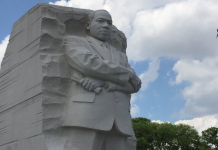Next week, we are celebrating Kwanzaa! Although I am a mixed-race, BIPOC woman, I grew up in a predominately white home and area. I have spent a large part of my adulthood learning about my culture, who I am, and who I want to be as a person.
For the last few years, I have spent time building my capacity, especially around Kwanzaa, in preparation to celebrate with my family and make sure that I am teaching my children about my culture. I am very excited to share some information that I have taken in, so I can be ready to teach my kids about our culture and embrace how important this holiday is in the African American community. We have been celebrating for several years now.
What is Kwanzaa?
Kwanzaa is a meaningful cultural holiday that celebrates African American heritage and traditional values. It was founded in the 1960s during the Black National Movement as a way to honor and reconnect with African roots while fostering a sense of community and cultural pride. Observed annually from December 26th to January 1st, Kwanzaa is a seven-day celebration, with each day focusing on a specific principle or social value, such as unity, self-determination, collective work, and responsibility.
This time of year highlights important themes like unity, creativity, faith, and gift-giving, all of which hold a special place in my life. These values not only serve as guiding principles for the celebration but also as a foundation for everyday living. For me, Kwanzaa represents an opportunity to reflect on these ideals and to teach my children their significance. I strive to instill in them a sense of pride, purpose, and community, encouraging them to embrace these values in their actions and interactions throughout the year. Celebrating Kwanzaa is not just about tradition; it is about cultivating a legacy of cultural awareness and shared responsibility that strengthens both family and community bonds.
The Seven Key Principles
During the seven-day celebration, there are seven key principles that are focused on–one each day.
- Umoja focuses on maintaining the unity of the family, the nation, race, and the community around us.
- Kujichagulia focuses on the self-determination to create and do things for ourselves.
- Ujima focuses on collective work and the responsibility to build each other’s community and help our friends and families.
- Ujamaa focuses on economics and supporting Black-owned businesses, shops, and stores.
- Nia focuses on the vocation of building and developing communities to restore them.
- Kuumba is the day of creativity.
- Imani is the day of faith.
The focus of each of these days is to bring together the Black community as a family and learn about the traditions of those before us, and focus on learning and appreciating one’s culture.
Symbolism + Decorations
The traditional colors of Kwanzaa are black, green, and red. On our table, you will find traditional African cloth patterns. You will also find a Kwanzaa kinara with the seven candles–one representing every celebration day.
I felt it was essential to create a festive atmosphere and ensure my children were exposed to the meaningful symbolism of Kwanzaa. By engaging them with the daily discussions about the seven key principles and allowing them to observe the symbolic decorations, their curious minds are encouraged to ask questions and explore deeper meanings. They also notice the Christmas tree across the room, naturally drawing comparisons between the two celebrations, allowing them to appreciate both their similarities and unique qualities.
Books to Check Out
There are so many books that you can share with your children to read about Kwanzaa or introduce them to the holiday. Here are just a few that I recommend:
- Kwanzaa: How to Celebrate It In your Home by Kathleen M. Taylor
- My First Kwanzaa by Karen Katz
- Kwanzaa by Lisa J Amstutz
I view this as a time to continue to have conversations with my children and my family about my African roots of heritage. This is as a week of vocal gratitude. I view this as a time when others can learn about the traditions as I share our journey of learning and celebrating. It is a celebration of unity, family, and gratitude. I am looking forward to sharing it with my boys and experiencing it again this year.











